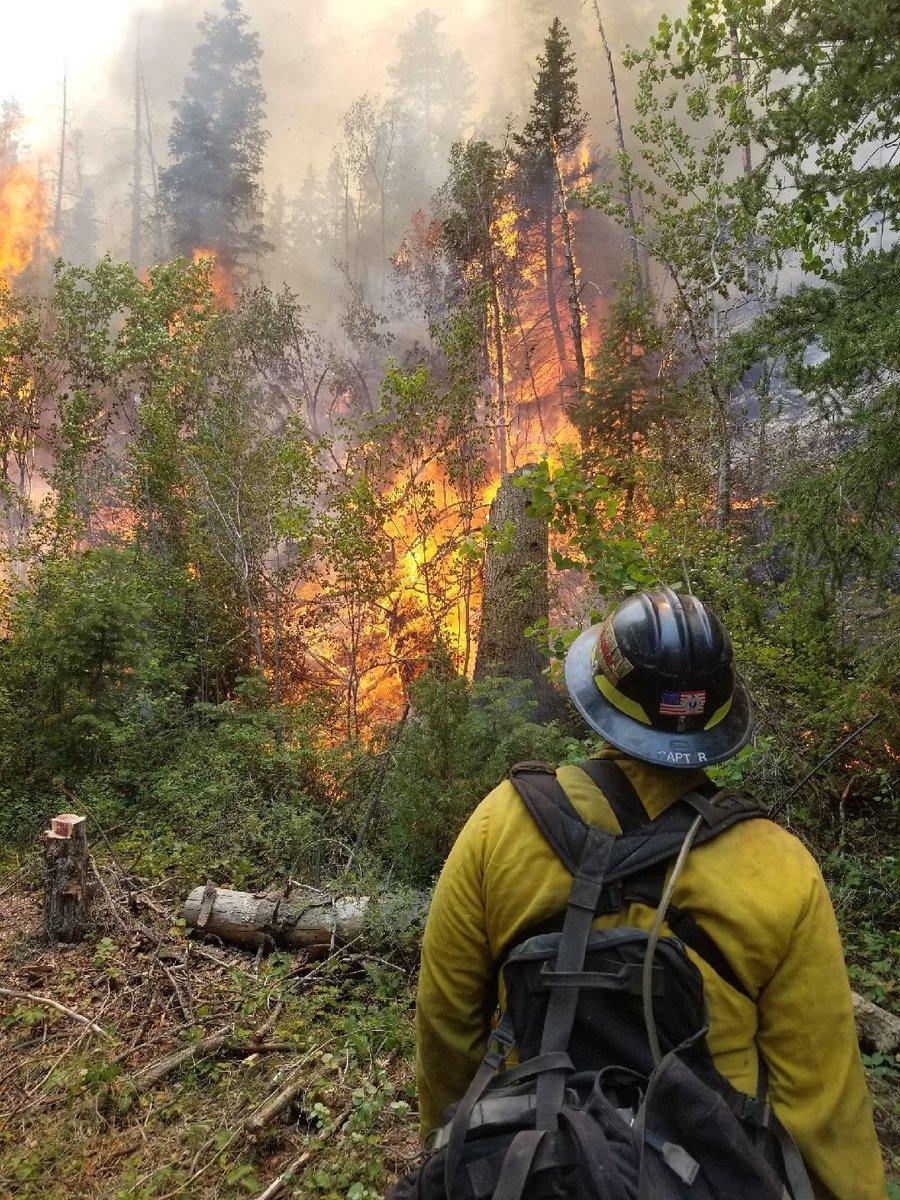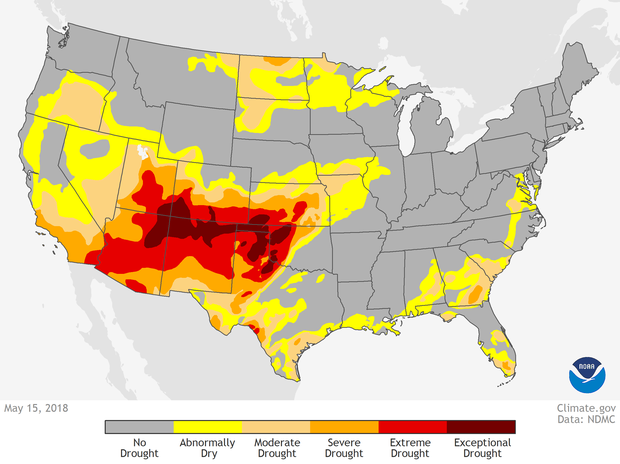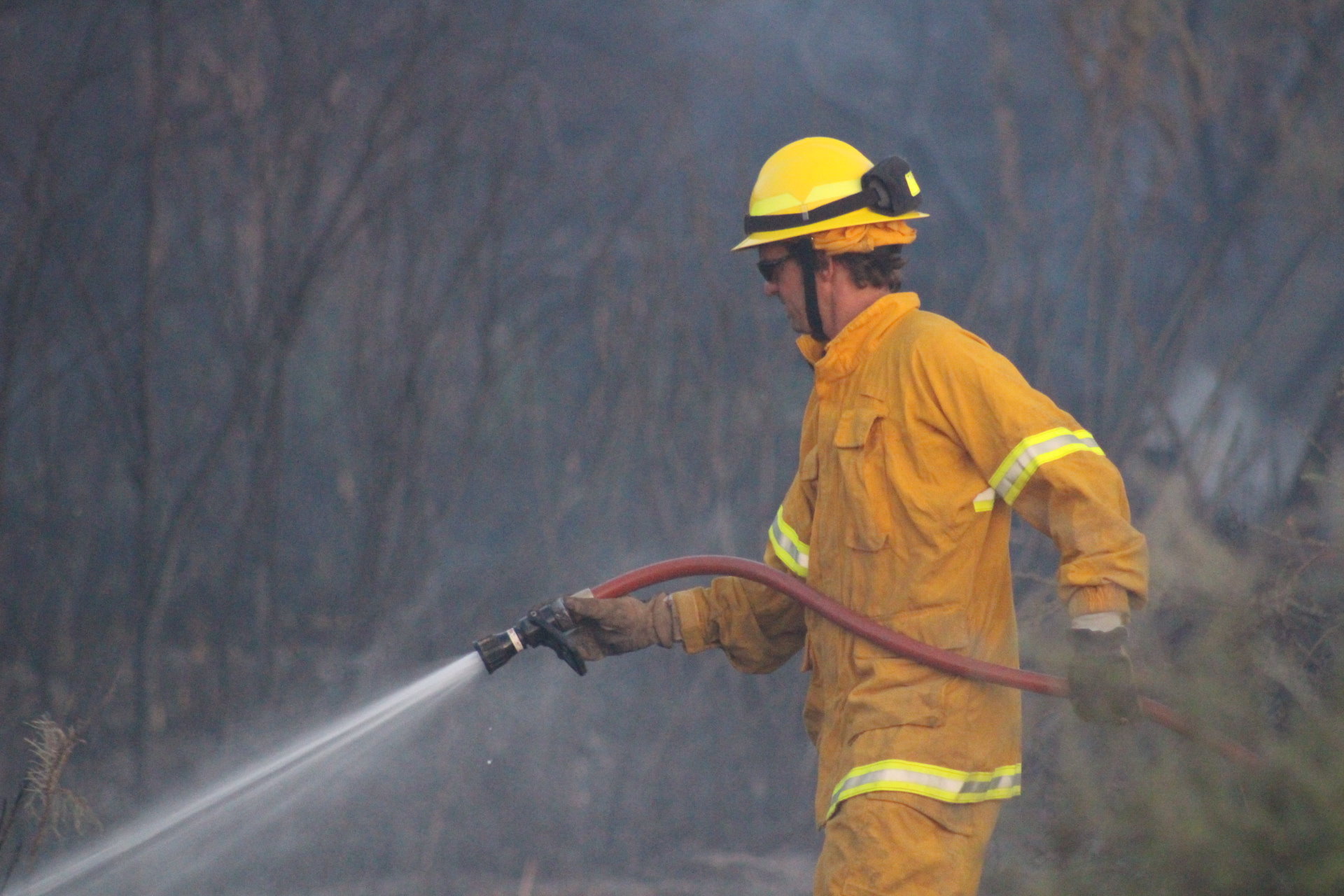
ST. GEORGE — In the face of extreme drought, state fire managers are anticipating a busy season of fighting wildfires, and areas of particular concern fall within Southern Utah.
Wildfire season is in full swing, and the summer heat is combining with the previous winter’s abysmally low snow pack to create drier-than-normal conditions across the state, potentially making Utah a tinder box just waiting to be sparked.

Already, a large fire is burning and continues to grow in central Utah. The human-caused Trail Mountain fire in the Manti-La Sal mountain range has burned through over 13,000 acres of beetle-chewed conifers, juniper and sage.
The fire started when a controlled burn in the area grew out of control after 55 mph winds triggered a rapid spread of flames. With the blaze only 17 percent contained, many area roads and campgrounds have been closed as the fire has grown.
Part of the fire’s spread has been the result of especially dry vegetation. Short grasses and small bushes, referred to by fire managers as “light fuels,” are particularly problematic for firefighters, given this year’s parched conditions.
“We really are experiencing the main part of the drying effect for our light fuels. So all the grasses are only going to get more dry from this point on,” Jason Curry, public information officer for the Utah Division of Forestry, Fire and State Lands, told St. George News.
“The overall outlook for precipitation from this point forward is pretty bleak,” he said. “We’re not really expecting to see much rain of any kind.”
This winter’s minimal snow pack and little in the way of anticipated rain mean the moisture content of vegetation will remains very low, making it all the more prone to ignition.

Almost all of Utah is currently in a state of drought, according to the National Oceanic and Atmospheric Administration, ranging from abnormally dry to exceptionally dry.
“Drought conditions in the southern part of the state are worse than the rest of Utah,” Curry said, “especially in southeast Utah.”
Conditions are bad enough in southeastern Utah that drought emergencies have been declared in Grand, Emery, Carbon and San Juan counties.
Other areas in Southern Utah, such as those surrounding St. George and Cedar City, have been categorized by the National Oceanic and Atmospheric Administration as experiencing severe drought.
Fire managers don’t anticipate much in the way of drought relief until the monsoon season begins in late July when moisture from the Gulf Coast and the Pacific start to flow into the area.
“If that comes into play, as it normally does, then we should see some relief, especially in Southern Utah,” Curry said of the monsoon rains.
In the meantime, he said, any fires that start will likely be the result of human activities.
Between 50-60 percent of all wildfires are human-caused in a given year, Curry said, noting that this year has been no exception, with the majority so far being sparked by people.
In addition to increased travel and recreation being catalysts for fires during the summer, people working outdoors with welding equipment or small combustion engines can cause wildfires.
Read more: ‘If it can spark, it can cause a fire’: Tips on preventing human-caused wildfires
Once the monsoon rains develop, Curry said he expects the number of naturally caused fires to go up due to lightning strikes that accompany thunderstorms.

“The ratio sort of evens out through July and August,” he said. “Hopefully, the wildfire season can have a slow beginning because people have been careful and observing restrictions.”
State fire managers have been working proactively this year to institute fire prevention measures and order fire restrictions when needed.
“We assembled a team of fire prevention staff from the state of Utah,” Curry said. “We teamed up with the Forest Service and the BLM to work together throughout the entire state pushing fire prevention messages.”
These have included efforts online through social media and on-the-ground work erecting signage in recreation and transportation areas.
The messaging efforts have been completed throughout the entirety of Southern Utah, and fire managers are now making their way through northern Utah.
Fire restrictions have also been implemented proactively, which are put in place once an analysis of conditions has taken place.
“We have to have science that goes with it, and that includes fuel moisture, expected weather and things like that,” Curry said of the restrictions.
Virtually all of Southern Utah is under some level of fire restriction as of Sunday, which include prohibitions against building campfires, lighting fireworks and outdoor welding, among others.
Read more: As wildfires rage, officials implement new fire restrictions in Southern Utah

The payoff of the state’s fire prevention efforts can’t be underestimated, given the massive cost associated with large wildfires.
Exactly one year ago from Sunday, the massive Brian Head fire ignited in the mountains east of Cedar City. The fire burned through over 71,000 acres before it was contained. It cost approximately $34 million to fight and burned down more than a dozen homes.
Beyond the firefighting effort, the fire closed down all recreation and work in the area and resulted in thousands of evacuations. Rehabilitation work on the resultant burn scar continues to build on the financial cost of the human-caused fire.
“We never know what the effect of all the outreach and hard work is, because it’s very difficult to measure a fire that didn’t start,” Curry said. “We’re fairly confident that we’ve had an impact, and fire starts have been down because of our efforts.”
Email: [email protected]
Twitter: @STGnews
Copyright St. George News, SaintGeorgeUtah.com LLC, 2018, all rights reserved.
Let’s start some fires BLM. With your so-called control Burn that gets out of control